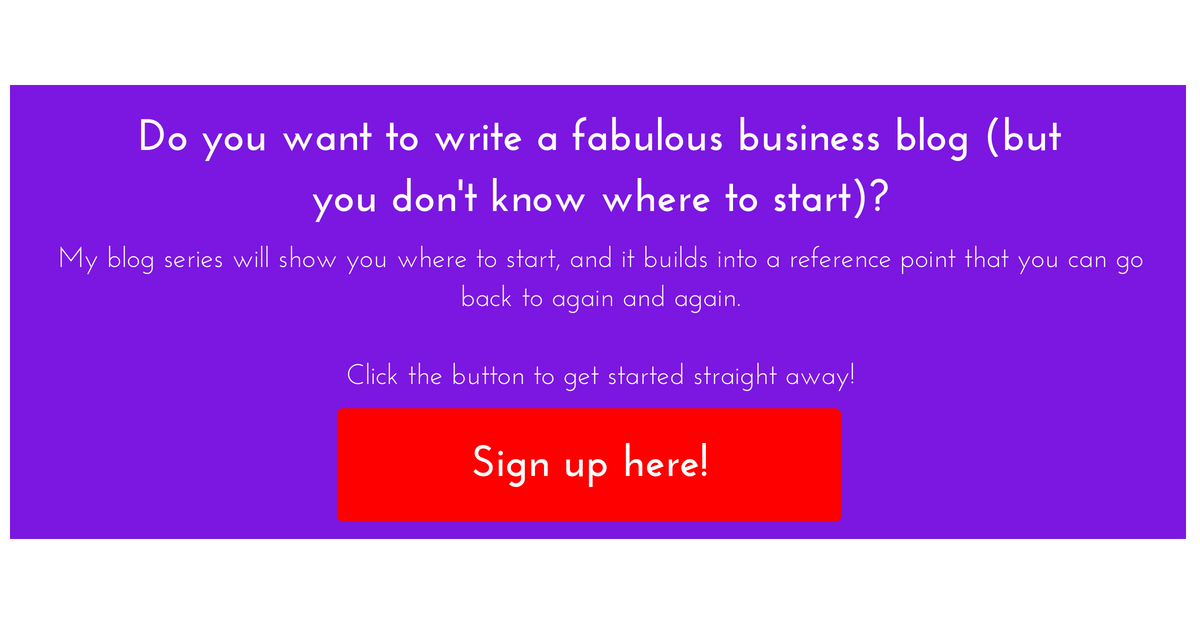 When it comes to choosing some social media platforms for your business, the possibilities are endless. Where do you start? Should you just post everywhere and hope for the best? Would you get any actual work done if you did?
When it comes to choosing some social media platforms for your business, the possibilities are endless. Where do you start? Should you just post everywhere and hope for the best? Would you get any actual work done if you did?
There isn’t a one size fits all answer, but there are ways to make life easier. Here’s how I approached choosing social media platforms for myself.
Think about your customer
If you’ve ever read my blogs before this won’t be news. In fact you’re probably rolling your eyes saying “oh no, she’s banging on about knowing your customer again”. The truth is, there is no point posting on any social media platforms unless your customer is there.
If you don’t already have a clear idea about who your customer is and where to find them, start here. The world and his granny might be on Facebook but that doesn’t mean you shouldn’t look elsewhere. If you already have a few ideal customers or if some of your friends fit the bill, ask them what they like. There’s a huge amount of choice out there so think about where you’ll find the people you want to talk to.
Do you have a niche?
If you serve a particular type of customer or work within a niche industry, you can be even more focused in your search. Even if you choose a very broad platform like Facebook you can find groups within that where your customers spend time. That doesn’t mean you should join and go into full on sales mode, that’s just rude. But you can build your reputation as someone who knows their stuff and is helpful to other group members.
In fact, if you’ve started a niche business because you love it, you probably don’t need me. You already know where to find people who love the same things as you.
Social media platforms and native content
When you’re looking at different platforms you should also consider what type of content your audience enjoys. For example, you might be able to find all the customers you could ever want on Facebook. But what do they actually engage with? Do they only watch videos, or read blogs? Do they love memes and gorgeous pictures? By approaching the search in this way you can post content that people are more likely to react to.
Then, you can use the information to choose another platform. If you get loads of engagement when you post a video, head for YouTube. You can share images on Instagram or Pinterest and repurpose your blog to answer questions on Quora. There are some platforms where you can share multiple types of content and others that focus on just one. Look at what a site’s native content is. As a general rule, every social media platform prefers content that’s posted directly to the platform. For example, you’ll get better reach if you publish your article on LinkedIn’s own publisher than you will if you share a link to your website.
Start small and give it some time
You could choose multiple platforms and start posting. However, you might find that you swiftly run out of steam. Choose one or two social media platforms to start with and see what works. You’ll be able to focus on producing quality content and assessing what people respond to. That could take some time. If you’re starting from scratch it could take between three and six months before you start to see real results, so stick with it.
If you want to get your business blog off to a flying start you can complete the form to invite me over to your place to run a fabulous blogging workshop. Or sign up for my free email series by clicking the image below.
[gravityform id=”5″ title=”true” description=”true”]
